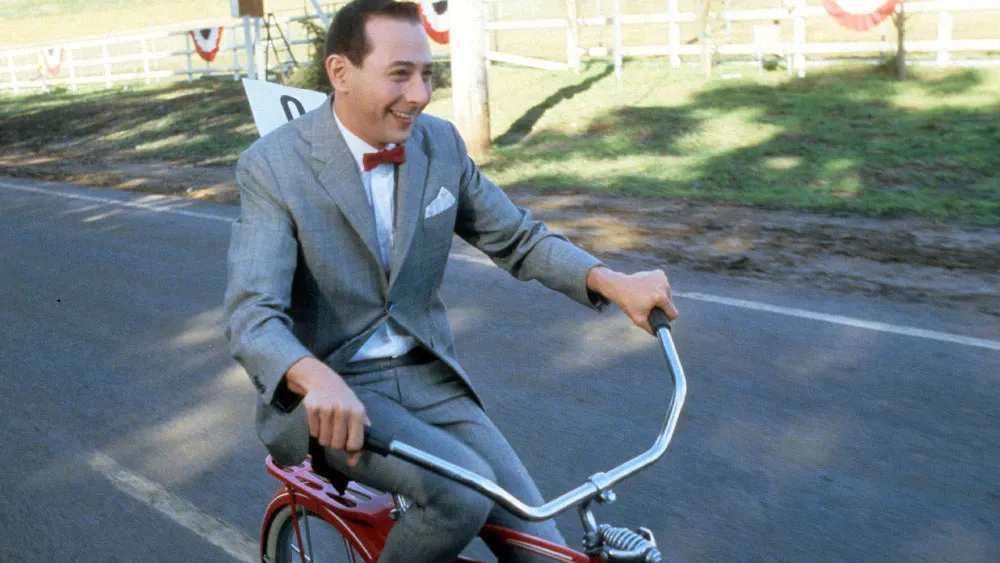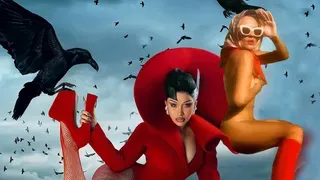November 4, 2010
Back to 'The City' :: Armistead Maupin on 'Mary Ann in Autumn'
Kilian Melloy READ TIME: 13 MIN.
Armistead Maupin took up a great literary tradition when he began writing serialized novels for the San Francisco Chronicle. Like Charles Dickens and Sir Arthur Conan Doyle before him, Maupin saw his serialized stories published in book form after they ran their course in the newspaper; the first novel, Tales of the City, was published as a book in 1978. Three more novels were serialized in the Chronicle, and a fifth ran in serial format in The San Francisco Examiner. A sixth, Sure of You, was written and published as a novel without being serialized.
The "Tales of the City" novels followed the escapades of San Francisco transplant Mary Ann Singleton, a Cleveland native, and the friends, foes, and colleagues she encountered upon moving, in 1976, to what has become the city's most famous address: 28 Barbary Lane, a small establishment run by a wise and eccentric transsexual landlady named Anna Madrigal.
The occupants of Mrs. Madrigal's apartments included Michael "Mouse" Tolliver, a gay man who hailed from Florida, the land of oranges and Anita Bryant; former lawyer Brian Hawkins, a liberal firebrand turned womanizer; Mona Ramsey, a lesbian and feminist struggling against the structures of the male-dominated business world; and Norman Williams, a shady salesman with a huge crush on Mary Ann. From this starting point, Maupin's novels traced the comings, goings, and elaborate intersections, of the characters and their "significant others" (indeed, the fifth book in the series took that term as its title).
True to their heritage, Maupin's stories wove multiple story lines and characters into their fabric, often with dramatic mysteries afoot and extraordinary coincidences goosing things along. But the serialized novels also embraced the tradition of observing social issues, and of making them keenly felt to the reader: Maupin's books were the first American literature to tackle the AIDS crisis, with one major character dying of the disease in-between novels, and another learning--at a time when there was no guarantee of long-term survival--that he was HIV positive.
In his introduction for a Harper Collins British omnibus edition of the first six novels in the Tales of the City series, Maupin wrote about his reasons for moving away from the series of novels that had put him, and his characters, on the literary map. "The decision to end the series," Maupin wrote in the May, 1990-dated introduction, "was born of several concerns: an urge to explore new territory, a fear of growing stale, of cranking out installments like so many sausages."
Even so, Maupin wrote, he "fretted" over "abandoning" his creations: "Only days after the [1989] American publication of Sure of You San Francisco was rocked by its worst earthquake since 1906," Maupin recounted. "I was on book tour in Boston at the time, but the media's obsession with the event was such that it followed me around the world. Thirty cities later at a 'Barbary Lane Dinner' in Melbourne, Australia, I remarked to a reader that I couldn't help wondering what had happened to Mrs. Madrigal in the catastrophe."
The reader's response was this: " 'Well,' she said, 'she was buried under the rubble for a while, but they spotted her purple cloche at the last minute and she was saved.'
"It was then that I realized my guilt had been foolish," Maupin wrote. "Anna and the gang could carry on just fine without me." But in 2007, eighteen years after the publication of Sure of You--after the first three novels had been adapted as a trio of television miniseries starring Laura Linney as Mary Ann Singleton, and after both San Francisco-based male choir Chanticleer and the Seattle Men's Chorus had mounted musical tributes to the Tales of the City gang--Maupin surprised and delighted fans with a new Tales novel, Michael Tolliver Lives.
Maupin picked up the action more or less in real time: Mouse was now middle-aged, a survivor both of the dot-com bubble that drove up housing prices in San Francisco and of the worst of the ravages of the AIDS crisis. He'd also survived a breakup with his longtime partner, and moved on to a much younger husband, a fellow named Ben.
Now Maupin has written an eighth Tales of the City novel, Mary Ann in Autumn, a story that brings his complex female protagonist back to San Francisco after an absence of nearly two decades. Mary Ann's marriage has come to an end; her stepson has moved out of the house and begun his own life; and her life has entered a frightening new phase, as Mary Ann reconnects with Mouse. It's a book that feels both like a homecoming and a completion of a great literary arc: warm, compassionate, and gleefully embracing, once again, the conventions that defined the earlier books in the series, as characters old and new (or, rather, middle-aged and young) cross-connect, and a fresh mystery intrigues Mary Ann--a woman who, as Mouse observes, may be "a drama queen, but she's had some actual drama."
In a recent telephone interview, EDGE asked Maupin whether, when he first sat down to write Michael Tolliver Lives, he had a presentiment that he would go on to pen yet another Tales of the City novel.
"I had a sense that I would be writing more about these characters, though I wasn't quite sure," Maupin said. "With Mary Ann in Autumn, I wanted to write something about women of a certain age. I have a lot of female friends who are in their late 50s, early 60s, who are contemplating the last chapter of their lives, and realize they have the option to change things because they're of the boomer generation, but they're not quite sure what they should do. That makes them different from their parents' generation. My mother, for instance, knew she was pretty much stuck in her life by the time she turned 50.
"I also wanted to return to the multi-character tapestry of Tales of the City," Maupin added. "I'd been missing that." By this, Maupin was referring to the strikingly different style of Michael Tolliver Lives, which is told in the first person, from Mouse's point of view.
"I began by wanting to write a novel about a middle aged gay man who was surviving AIDS after many years," Maupin explained. "Initially, that was going to be a brand-new invention, but I realized that I had a great advantage in Michael Tolliver, in that people know his history and his life resonated for people in a way that a brand new character might not. I told the story that I wanted to tell, but focus on just one of the Tales characters. A number of others, as you know, began to 'audition' for me, and eventually found their way into the story."
Shifts in Perspective
But with Mary Ann in Autumn, Maupin returned to the third-person voice. "The third-person format with shifting points of view allows you to enhance suspense, and keep the story rolling a way that I find very pleasurable," Maupin said. Indeed, the new novel takes full advantage of that, cutting between the book's criss-crossing story lines with cliffhanger timing.
Maupin noted that his two non-Tales of the City novels, Maybe the Moon and The Night Listener, were also told in the first-person style. But even those books bear a Tales of the City stamp, with characters from the Tales novels making cameo appearances in both. "I can't leave the universe of Tales of the City completely, so there's always some sort of nod," Maupin told EDGE. "And Mary Ann Singleton references a character from The Night Listener as well, ever so briefly."
To be sure, it pays to keep your eyes peeled when reading Maupin's books. Mary Ann in Autumn is connected directly back to Sure of You, which contains a single, brief scene that has a direct bearing on the new novel. Maupin must have been plotting the subsequent story twist ever since. "I was, indeed I was," Maupin said mischievously. "It took 21 years for that ball to drop." As for the book's revelry in the sort of wild, mysterious plotting that made the earlier books such a compelling mixture of sensitive character portraits and thrill ride, "I was feeling a little Gothic this time around," Maupin said. "I've always had shameless Hitchcockian urges, and I let myself exercise them in Mary Ann in the Autumn."
Maupin might just as easily have approached the issue of the long gap between stories by picking up the thread only a year or two after Sure of You, but his choice--to rejoin the characters in mid-stream, with a myriad of changes in their lives having taken place--created a whole new level of interest. Had he taken the intuitive route, allowing his characters to "dictate" to him where they were in life and what they were doing? Or had he diagrammed things out?
"It was a little of both, to be honest," Maupin told EDGE. "I have to consider some of the possibilities on my own, but many of them have histories that emerged as I was writing. It's very had to described the process at this point."
Many writers have made similar revelations about their creative process: characters often become, in the imaginations of their creators, beings that exercise their own opinions and, sometimes in the course of writing, their own wills. "I now refer to Mary Ann as my 'inner girlfriend,' because she pretty much moved into my head all those years ago and she's never left. My head may be the only place she's never left!" Maupin said of his character, who infamously abandoned San Francisco--and Mouse--just as Mouse was coming to terms with being HIV positive. "She's not good at sticking around, that girl."
As for the actress who played Mary Ann to such perfection, Laura Linney, she's all but become Mary Ann for Maupin. "It's funny, I can't read anything now that comes out of Mary Ann's mouth now without thinking of Laura Linney," Maupin told EDGE. "[The new book is dedicated to Linney] for precisely that reason, and the fact that we've become very close friends over the years. She read a poem at my wedding and then asked me to come read the same poem at her wedding. Politically, we're completely on the same page."
Mary Ann is a many-layered character who may come or leave as she pleases, but fans of the series are happy never to let her and the other characters go. Even now, a musical stage version of Tales of the City is in the works, scheduled to premiere in May of next year. "At the American Conservatory Theater in San Francisco," Maupin specifies. "I just last week saw two workshop presentations, with a little movement, but mostly with performers standing behind microphones. I couldn't be more thrilled."
Thrilling is the word, given that the music and lyrics are the work of Scissor Sisters band mates Jake Shears and John Garden. "The songs that Jake Shears and John Garden have written are just remarkably appropriate for all of the characters," Maupin said enthusiastically. "They've actually created songs that could only have come from certain of the characters, in styles that are compatible with the personalities of the characters, so the music brings a brand new depth to the story. I think anybody who is familiar with the work of Betty Buckley [who plays Anna Madrigal] will understand how thrilled I was to sit there and look into her eyes as she sang her two new songs for the first time."
As for his material being given musical treatment by two of the Scissors Sisters, "It is a great pairing, I think," Maupin said. "There is a certain retro sound to their work, although it is completely modern. There's sentiment and intelligence, and guts there, too. It was [author of the stage production's book] Jeff Whitty's idea to hire them, and once again he's thinking in entirely the right way.
"Jeff cooked this up to begin with," Maupin told EDGE. "He was on a red-eye flight to London watching Tales of the City on his laptop, when it dawned on him that it might make a good musical. It was easy to say yes to Jeff, because I had seen Avenue Q and knew what brilliant work he'd down with his libretto. He knew how to juggle a lot of characters and make it work on stage."
EDGE wondered whether Shears, Garden, Whitty, and the show's director, Jason Moore, have turned to Maupin for his sage advice in the process of putting the musical together.
"Yes, they do, quite often, in a way that is very kind, and I suppose wise, because I do know the characters so well," Maupin said with a chuckle. "But having said that, I don't intrude very much, because I trust the instincts of these guys in a big way. They've done beautiful work before, and they show every evidence of doing it again for Tales of the City, so I feel very lucky."
"Music for Mouse"
The conversation turned to the earlier musical treatments, by Chanticleer and the Seattle Men's Chorus. "Most of those songs were all pre-existing pop songs from the era, except for David Maddux's long, beautiful rendition of 'Michael's Letter to Mama,' " Maupin said, referring to an original composition that sets the words from Mouse' coming out letter to music. (The nine-minute song, described at the Seattle Men's Chorus web site as "one of the most requested pieces the chorus has ever performed," is featured on the Chorus' CD Home.) "That letter has a whole new incarnation in the musical of Tales of the City," Maupin added. "It's got a life of its own that makes me very happy."
That's as it should be: Mouse's coming out letter, a linchpin moment in the books and the miniseries alike, is a moving testimony from the gay perspective, and a powerful rebuttal to the claims made by heterosexuals who dismiss gays as "deviants" who have "chosen" their so-called lifestyle. "The sad part about that coming out letter is that there's nothing in it that isn't applicable to a teenager today trying to explain to his or her parents that they don't need 'saving' from the scourge that their parents are fighting so hard at church and in the voting booth," Maupin said. "It's an integral part of who they are--not something they chose, but something they are. And all you really need to do is change Anita Bryant's name to Maggie Gallagher, and all the same issues apply [today that applied in the 1970s]. That's why I think the timing for this musical is very interesting, because there are still people who need to hear it."
EDGE asked Maupin whether he had a sense for how his work has helped create acceptance for GLBTs in American society.
"I hope so," Maupin said. "Gay, lesbian, bisexual, and transgendered people tell me that it has helped them accept themselves and get on with their lives. Straight folks tell me it gave them a better vision of what it is to be gay. I hope that's true, because that's the things that; most important to me. It's far more important to me than my literary career. I love telling stories, and find huge satisfaction in that, but I'd much rather know that my stories has served a purpose.
"Some writers strive to be descriptive, rather than prescriptive, but I find no shame in prescription," added Maupin. "The 19th century serialists like Dickens and Thackeray did the same thing around social issues, and happily I've been able to do it for modern times."
Maupin's ability to incorporate contemporary issues into his work is reflected once again in Mary Ann in Autumn. One of the younger characters--Jake, a transman who serves as caretaker for Mrs. Madrigal, who has moved into a smaller home and given up 28 Barbary Lane--strikes up a friendship, and more, with a young Mormon missionary who has come to San Francisco to work for the passage of Proposition 8.
The Mormon character, Jonah, could easily have been a villain or served as a pi�ata for the gay community's rage; instead, Maupin is generous to the character, presenting him as a gay man struggling to become straight. Jonah's confusion and pain do not make him heroic, but they do make him sympathetic, and honor his humanity.
Maupin told EDGE that, "the sympathy I feel toward him is toward a young man who's been brainwashed and browbeaten by family and church, not toward a Prop 8 volunteer. Chris [Turner, Maupin's husband] and I were out there picketing the Mormon Temple in Oakland shortly after the proposition passed," the novelist added. "I know we're going to get past this last thrash of the homophobes. Gay folks just have to stay focused and not pick each apart in the process. When you've been at this as long as I have, the sense of change is palpable--with or without the threats and promises of politicians."
Maupin's reference to his longevity on the American GLBT scene carries with it the authority of a keen cultural observer. In one of the earlier novels written in the 1980s, there's an exchange in which Mouse remarks to Brian that the young people of the day are much too sexually repressed for his taste. Mouse frets that one day, he and Brian will be old hippies surrounded by Calvinists. That remark served as an epigram for Michael Tolliver Lives, but could it be the case that another generational shift has occurred since then?
"I think we have a generation of young people who really see sexuality as far more fluid than my generation, because they feel free from some of the old terrors," Maupin told EDGE. "But if you ask a kid from rural Oklahoma, you'll get an entirely opposite reaction, precisely because churches and politicians are actively fag-bashing. That makes their lives, in some ways, more miserable than mine was as a child, because at least back then homosexuality was simply not discussed under most circumstances. [And now] it's a playground slur that's endorsed by the Pope and half the preachers in America. It's a serious problem."
But overall, the issue of hostility toward gays seems to be a generational issue: "A friend of mine said, all we really need is one good flu season," Maupin continued, "meaning it's mostly the old folks who can't get past this. I hope that's true, because I wouldn't like to see new generations of gay people go through what the rest of us have been through."
Maupin's work has kept up with those generational changes. The last two novels have featured a grown-up version of Mary Ann and Brian's daughter, Shawna--now a sex columnist, which seems like a clever, if proprietary, tip of the hat to that other City and its ultra-hip, sexually modern women. After all, Sex and the City, for all its glossy millennial New York sophistication, owes more than a little to the cultural and literary ground that Maupin broke on the other coast two decades earlier.
"I like Shawna very much and I know young women just like her," Maupin told EDGE. "I feel comfortable enough to write about a 25-year-old. In some ways, their yearnings are similar to what Mary Ann's were all those years ago, but in others, they have more options, and more tools for dealing with the complications of life."
EDGE asked whether Maupin is feeling a tug to take the series--its old and young characters alike--forward even more, in a ninth installment. "There's a very strong possibility of it, but I don't know until I actually sit down and make myself write," Maupin said. "I think if I had told myself 36 years ago that I was going to write about the same people forever, I might have found the task a little daunting, but I've taken it one step at a time and allowed the characters to tell me pretty much what to do."
Kilian Melloy serves as EDGE Media Network's Associate Arts Editor and Staff Contributor. His professional memberships include the National Lesbian & Gay Journalists Association, the Boston Online Film Critics Association, The Gay and Lesbian Entertainment Critics Association, and the Boston Theater Critics Association's Elliot Norton Awards Committee.






